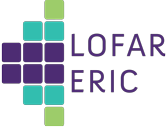Speaker
Description
Studying the redshifted 21-cm signal emitted by neutral hydrogen during the Epoch of Reionization and Cosmic Dawn is crucial for understanding the physics of the early universe. One of the challenges that 21-cm experiments such as LOFAR face is the contamination by bright foreground sources, which necessitate accurate spatial and spectral models to minimize the residual contamination after their removal. This modeling is essential in scenarios where bright sources are close to the observing direction, such as in the 3C196 field, as well as in situations where they are far from the main field of view, as observed with A-team sources in the North Celestial Pole (NCP) field. In this talk, I present a new high-resolution model of Cygnus A, the brightest of the A-team sources, using LOFAR-HBA observations. This model improves previous models by incorporating physical spectral information through the forced-spectrum method during multi-frequency deconvolution. I will demonstrate how this new model effectively lowers the upper limits on the LOFAR 21-cm power spectrum extracted from the NCP, thus enhancing the quality of foreground subtraction. Furthermore, I introduce the first upper limits at z~9 from the 3C196 field, based on a single night of observations with LOFAR-HBA. The modeling challenge here is presented by 3C196, a ~100 Jy source at the center of the field, which helps the calibration but must be meticulously subtracted to minimize its residuals. Using a LOFAR-VLBI model of 3C196 and a processing pipeline different from the one used for the NCP, we achieve promising results that highlight the accuracy and potential of LOFAR for cosmological 21-cm signal observations.

